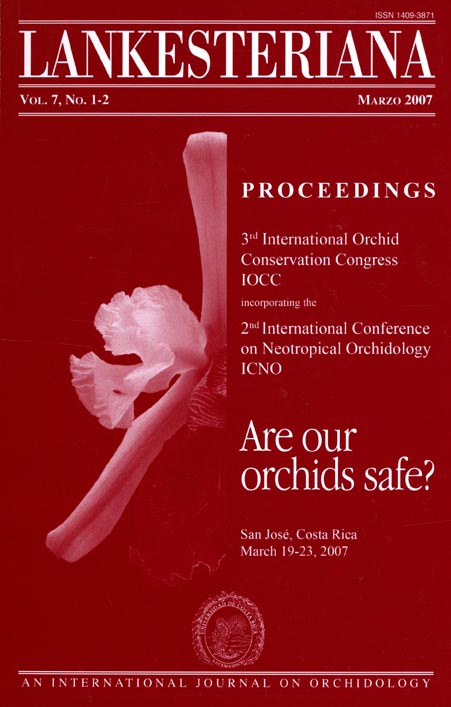Trophic relationships in orchid mycorrhiza – diversity and implications for conservation
DOI:
https://doi.org/10.15517/lank.v7i1-2.19560Keywords:
food limitation, heterotrophy, life history, mycophagy, predator-prey, senile populationsAbstract
Orchid species are perennial, and though demo- graphic data suggest that the family includes r- as well as K-strategists (Whigham & Willems 2003), most species are potentially long-lived. Individual plants may be kept in living plant collections or in nature reserves for practically unlimited periods of time. There are several reports on natural populations suspected of little or no seedling recruitment, “senile populations” (Tamm 1991, Rasmussen 1995), espe- cially among rare orchids under critical surveyance. Such populations may function as a seed source to neighbouring areas but are likely to eventually disap- pear from the site.
Downloads
Downloads
Published
How to Cite
Issue
Section
License
According to the Open Access policy promoted by the University of Costa Rica, all the papers published by Lankesteriana are licensed under the Creative Commons copyright and can be downloaded free of charge. The journal holds copyright and publishing rights under the CC BY-NC-ND 3.0 CR license.
Before the publication of the materials submitted by the author(s) in LANKESTERIANA, the author(s) hereby assign all rights in the article to the Lankester Botanical Garden.





